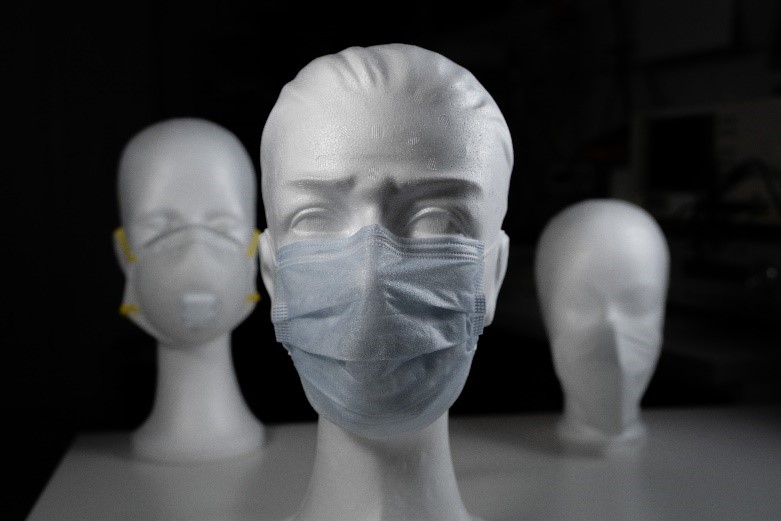Improved protective masks through innovative protective textiles
Mouth-to-nose protection has become commonplace during the Covid-19 pandemic. But many of the available products are not tailored for such uses. In the “Next Generation Protective Textiles (NGST)” project, ten Fraunhofer institutes are working on improved solutions that combine high protection with improved wearer comfort.

Until 2020, FFP2 masks were primarily used to protect employees in the construction industry from fine dust, for example. Since the Covid 19 pandemic, such and similar masks have become a staple. However, the products available to date have not been designed for widespread use and over a long period of time. This leads to shortcomings, such as increased breathing resistance, diminishing protective effect when soaked, or leaks through which virus particles can move because the masks are not tailored to different facial shapes.
Ten Fraunhofer Institutes thus pooled their expertise to develop high-quality protective textiles. "We particularly wanted to create solutions for people who have to wear such masks over a long period of time. We succeeded in making them more comfortable for the wearer, while even improving the protective effect. With the newly developed nonwovens, there is significantly less breathing resistance, the filter effect is higher and there are fewer leaks because we have also optimized the fit," says Annika Thormann, who led the subproject at the Fraunhofer IMWS. Prerequisites for this were the comprehensive analysis of performance parameters of textile protective equipment as well as solutions to produce corresponding protective textiles, which are available at the Institute in Halle (Saale).
The team at the Fraunhofer IMWS was responsible for evaluating the materials used and thus identified suitable materials for use in protective textiles. In addition, high-resolution imaging techniques, breathing resistance, particle retention and speech intelligibility measurements as well as the modification of materials by means of reactive plasma activation were used to test the functional, safety and health requirements of these new protective masks. Prototypes were finally produced and evaluated via 3D printing.
In the evaluation of the material, the fiber material, fiber length, homogeneity of the structure, and biological compatibility were some of the important parameters tested. In addition, the participating Institutes also had efficient manufacturing processes and a competitive price of the new material in mind. The improved filtering effect results, among other things, from a special surface structure of the multilayer masks and the electrostatic charging of individual layers. Furthermore, antiviral substances have been incorporated into the material so that viruses are not only blocked by the structure of the fabric of the mask, but are also deactivated when they enter the mask.
"We have closely followed the relevant standards and developed comparable testing procedures for other parameters. Thus manufacturers can ensure the material quality of their products. We can now also use these findings for comparable issues," says Thormann. "Nor is the new nonwoven material limited to the use in masks. I see a potential for air filtration systems, for example, to provide more protection against viruses as well."